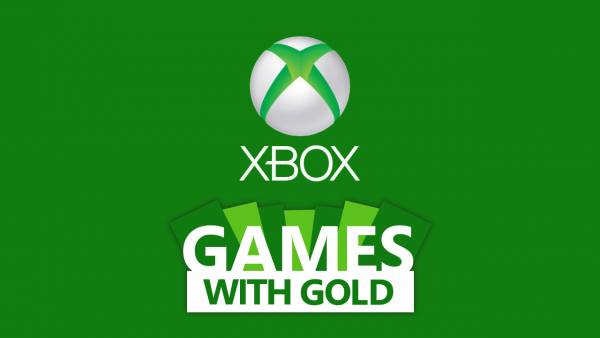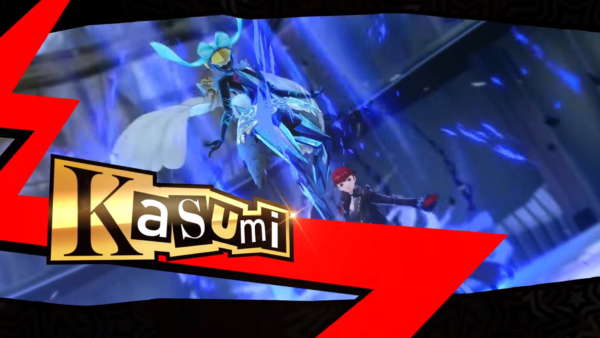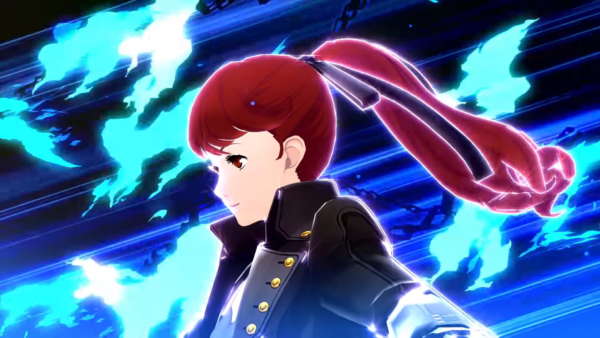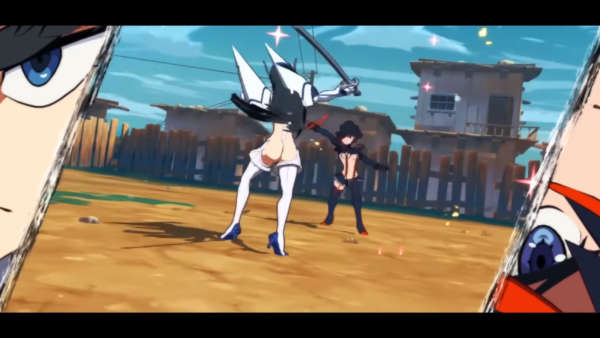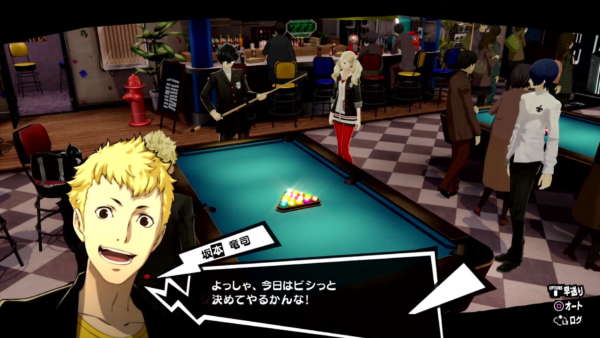Taking a sharp left turn in direction for the long-running series, Persona 4 Arena takes a much loved RPG and converts it into a beat-em-up. This kind of change can break a series, destroying a cherished canon or making fans feel lost and jaded in response. There isn’t much cross over between the two genres to begin with, let alone a spin off from a series that has never strayed far from levelling up and mastering turn based combat. This is why it is a near miracle that Persona 4 Arena turned out as well as it has.
Developed by Arc System Works, the team behind the Blazblue and Guilty Gear franchises, Persona 4 Arena presents itself unashamedly as a through and through beat-em-up experience. Taking the main cast of Persona 4, a handful from Persona 3 and one brand new fighter, it throws them into a new story aimed at pleasing long-time fans until the next core series iteration.
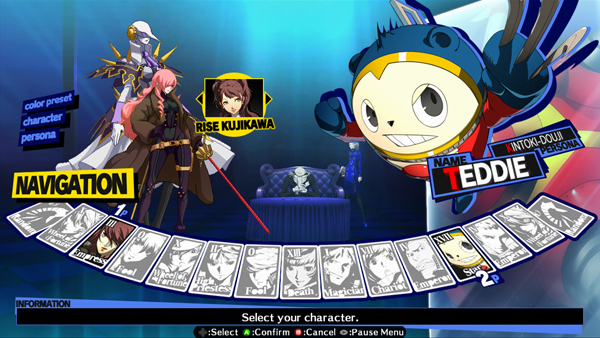
Persona 4 Arena Still Takes Every Chance To Remind Players That Tarot Cards Still Exist
The game from beginning to end is covered in fan-service, bringing back characters from two previous core games, along with the original soundtracks, with a few reappearing as remixes. Character art-work is slowly unlocked and the redesigns to the older returning characters will be sure to please those who were fans of S.E.E.S. Players who have experienced the previous shadow stomping journeys in Inaba and Iwatodai will get a strong feeling of nostalgia as elements of both games are woven carefully into Persona 4 Arena’s fabric.
This especially comes through in the games story mode, going beyond the usual excuse plot that most fighters use to have one character smack down the other. Instead Persona 4 Arena puts a lot of energy into creating a canonical continuation to the Persona series. Taking place a few months after the ending of Persona 4, Arena has the investigation team leaping into television sets once more as Teddie announces the P-1 Grand Prix fighting tournament inside the other world. Like most things however, it is never that simple. A web of interweaving storylines emerge that will entice series veterans with further implications that are sure to leave fans wanting Persona 5 to come faster.
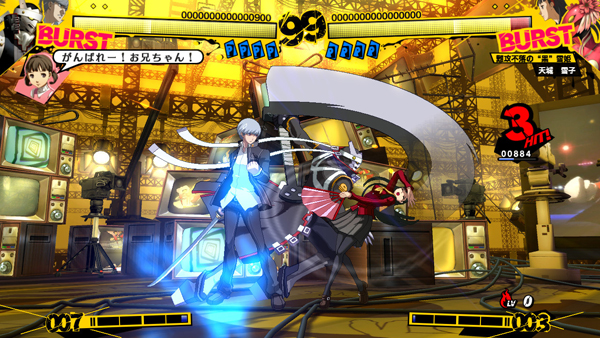
Fainting Is Not A Recommended Fist-Fighting Tactic
Persona 4 Arena is a great looking game. Sprites look crisp and clean, with persona attacks and spells conveying the otherworldly nature of their origins with a special eye for detail. Fluid attack animations and imaginative backgrounds make each battle enjoyable to play and watch. Teddie crashing a baseball bat into another characters face holds the same visual flare as Elizabeth’s all powerful -dyne level spells. If there was one flaw it would be the ultimate attacks. Given how much personality and style goes into each characters moves, they feel very bare and unimaginative. This leaves what should be a booming victory a feeble cry.
Each character has a short campaign to experience, presented in a visual novel format similar to Blazblue’s story mode. Each of the individual story modes are draped in reams of text that can be a little hard to stomach. Even though the voice-work is well done at bringing the still images to life, it doesn’t prevent boredom when pages of exposition need to be read between fights. With replayability encouraged through choices and multiple endings over the twelve story characters, the thirty hour campaign is enough to satisfy any Persona fan wanting to spend more time in the midnight channel. The presentation at times however can be a little dry, with long stretches of the story spent re-explaining the events of Persona 4. If there were an option to skip these sections, or place this recap elsewhere for new fans, it would help improve the pacing. Even then however, it doesn’t stop long periods of time where the only player input is comprised of pressing “continue”.
The battle system is skilfully crafted together, implementing fighting game standards while also carving its own identity by taking influence from the rest of the series. Each character has two normal attack keys and two persona attack keys. Normal attacks range from a sword slash to throwing a fan or shooting a gun and makes up the bread and butter of combat. Persona attacks vary much more however, summoning the characters magical guardian to fight on their behalf. These god-like apparitions are quite vulnerable though, and attacks are cancelled if the persona is subject to a counter-attack. Fling the persona into danger too often and they will no longer be available to summon, rendering multiple attacks unusable until they regain their health shown by four tarot cards.
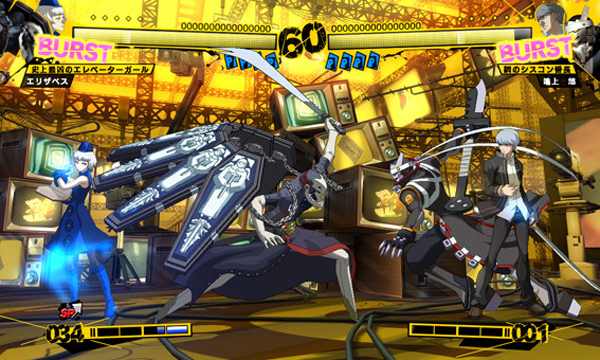
This Amount Of Yellow Puts Deus Ex: Human Revolution To Shame
Persona attacks vary greatly depending on the character, complementing how their counterpart plays. Yu’s persona thrusts towards opponents to pressure them, Yosuke’s persona delivers status attacks such as confusion and Aegis’s persona provides cover as she attacks from range. This dichotomy can create powerful strings of combos for those willing to learn the intricacies of the characters and the combat system
The number of fighters, while small in comparison to other games, is comprised of a well-rounded roster of series characters. Ranging from the easy to learn characters like rush-down centric Chie, to the more complex characters like Aegis and Naoto who have to factor in other aspects like their ammo and fate meters respectively. While each character has their own strong points, no character comes off as broken or overpowering in the long run. Each characters strengths shine through clearly enough so that even players new to the fighting game scene will understand how each character is designed to be played. Easy button combinations for special-manoeuvres and an auto-combo feature ensure that these players are catered for until they wish to learn the deeper ins-and-outs if the combat system.
Bringing together a burst system, super-cancels and well-timed counters, Persona 4 Arena does a competent job at training players to more advanced concepts. While the tutorial section could spend more time on the nuances of specific topics, it does an apt job at describing the uses of various techniques that were previously terms only used in the more hardcore side of the fighting genre. The system also makes every move as simple as possible, making sure the experience isn’t bogged down in complicated button gymnastics. Rarely does a move require more than two buttons, or a combo need anything that a quarter circle flick. It gives both fighting fans the systems they require as standard, and newbies a fighting chance to understand the deeper mechanics before entering the online arena.
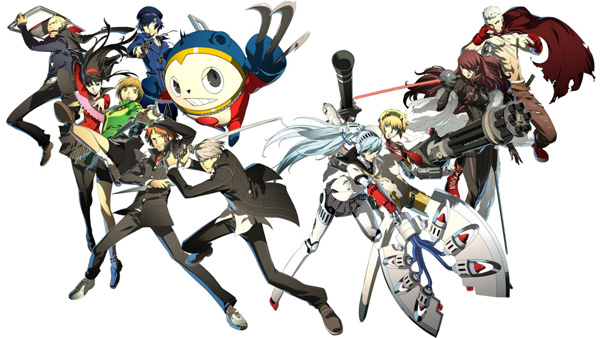
Friends Punch/Shoot/Stab Other Friends
Persona 4 Arena’s online system works well, with little to no latency issues to speak of. Offering a small variety of options to create rooms and matches, the system is quick and it is easy to find a match without too much downtime. While it will win no awards in design or for introducing anything unexpected, it is capable and works well even in the most fast-paced matches.
Persona 4 Arena is a surprisingly good turn for the much loved series. Providing a simple but deep battle system that is nuanced with the series identity to give it a feel of its own. On top of a brilliantly entertaining combat engine it also offers a lengthy continuation to the Persona storyline, even if it is presented without much glitz and glamour. While it may be a little easy without notching up the difficulty for fighting fans, Persona 4 Arena is an extremely satisfying buy for fighting game fans and genre newbies alike.
